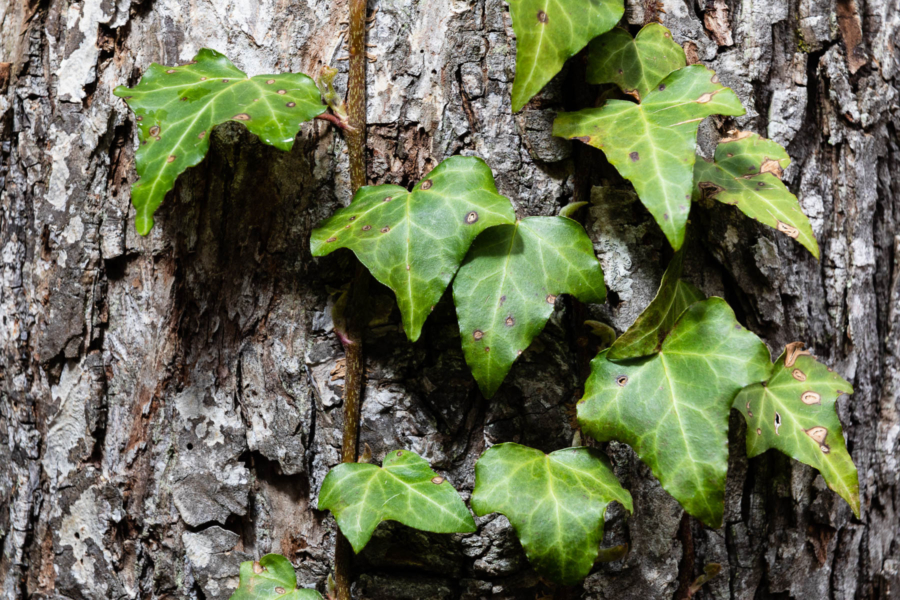English ivy is doing more harm than good in your yard
Often used for filling space in yards and neighborhoods, this invasive species is crowding out native plants.

English ivy is an invasive plant that can unfortunately be found all through the Chesapeake Bay watershed. Its vibrant green coloring and ability to grow quickly in various environmental conditions make it an appealing choice for homeowners and developers to cover empty space in a yard or neighborhood, but this plant often does more harm than good.
Native only in Europe, western Asia and northern Africa, English ivy has invaded the Chesapeake region and caused damage to otherwise healthy forested ecosystems. The vines of this species attach to trees and can loosen the bark, trapping moisture against the trunk and causing damage, decay and death. The plant is also known to spread quickly and keep more beneficial native plants from growing.
English ivy spreads quickly through stolons, or stems that grow horizontally along the ground and produce new plants. They also produce flowers and seeds during the late summer and early fall that are dispersed by birds. This species is able to generate quickly both on the ground and all over other plants such as trees, allowing it to completely overtake an area.
English ivy might seem like a cost-effective way to fill space with greenery, but it is very costly and labor-intensive to remove. Once English ivy has been established, it will crowd out other native plants and can choke and kill any shrubs or trees in the area. Its ability to climb trees and walls allows it to escape the area it was originally planted and continue to spread.
Damaging other plants is not the only threat that the English ivy poses in an ecosystem. English ivy is a toxic species, typically causing allergic reactions to the wildlife that interacts with it. The deep-purple berries that bloom from the plant in late autumn are also toxic to those who ingest it, causing wildlife in the area to find new environments.
If you are looking to lay down groundcover or replace existing English ivy, there are a number of native plants to consider. Alumroot is a great option that is able to tolerate various environmental conditions, similar to the English ivy. Golden ragwort is another alternative evergreen flower that acts as a groundcover, and the Virginia creeper is a native vine that will climb trees but is not harmful to them.
While English ivy is useful for quickly covering soil, the damage done to the surrounding ecosystems is not worth the reward. Next time you look for an evergreen plant for your outdoor space, consider a native species!

Comments
How do you remove English ivy, especially given it is so prolific and is able to generate so quickly? Won't it just outcompete the natives that you try to replace it with?
Thank you!
Your comment has been received. Before it can be published, the comment will be reviewed by our team to ensure it adheres with our rules of engagement.
Back to recent stories